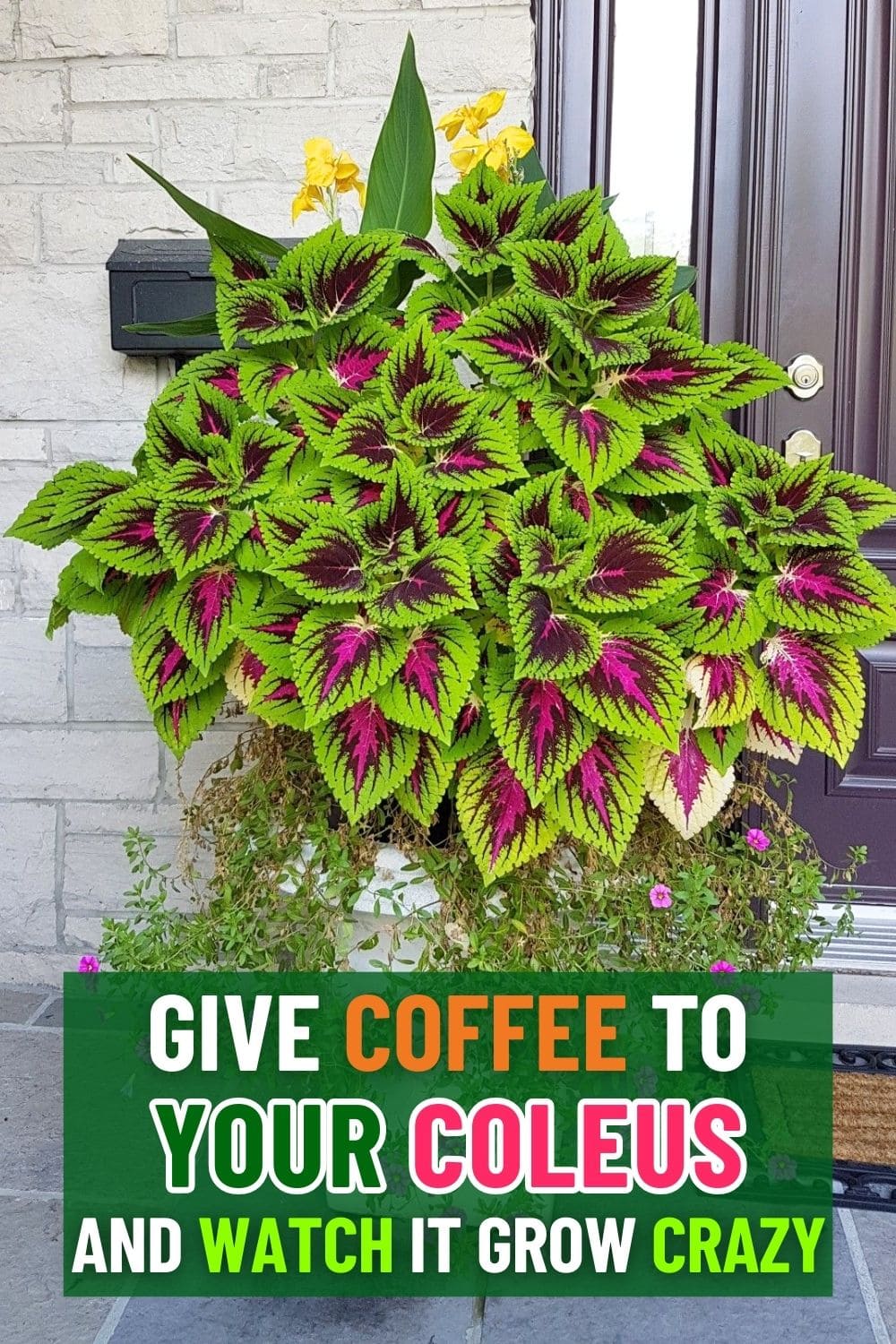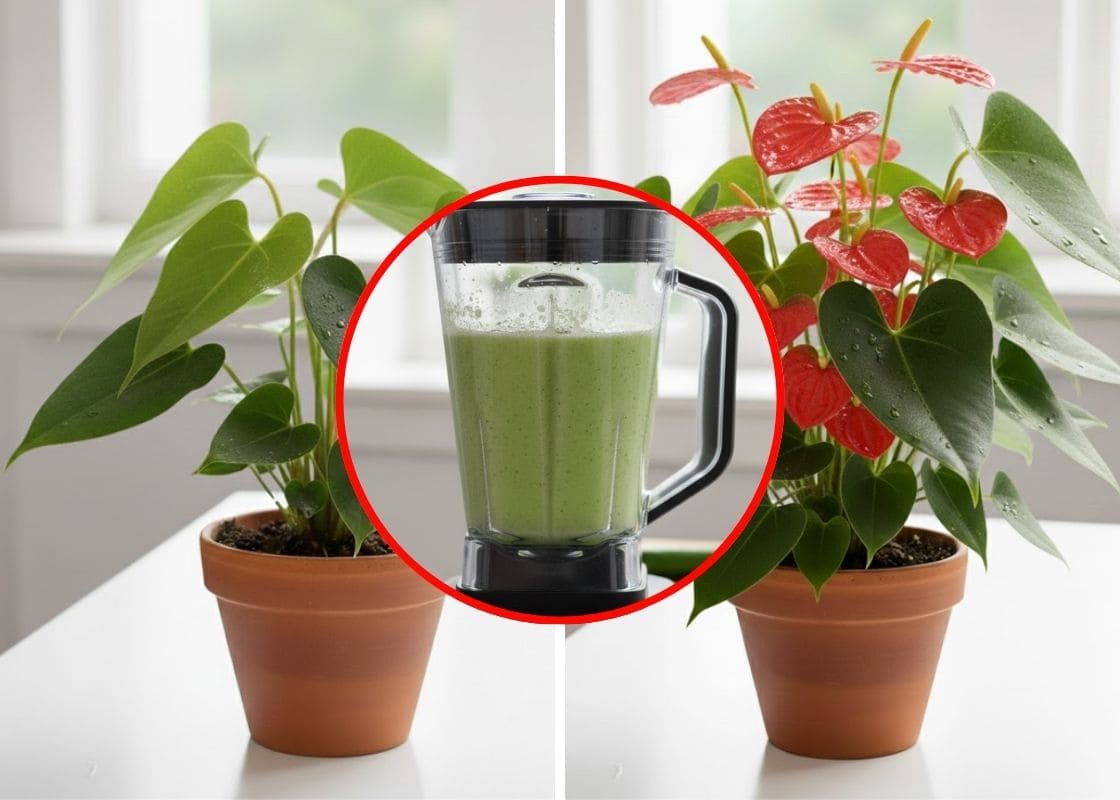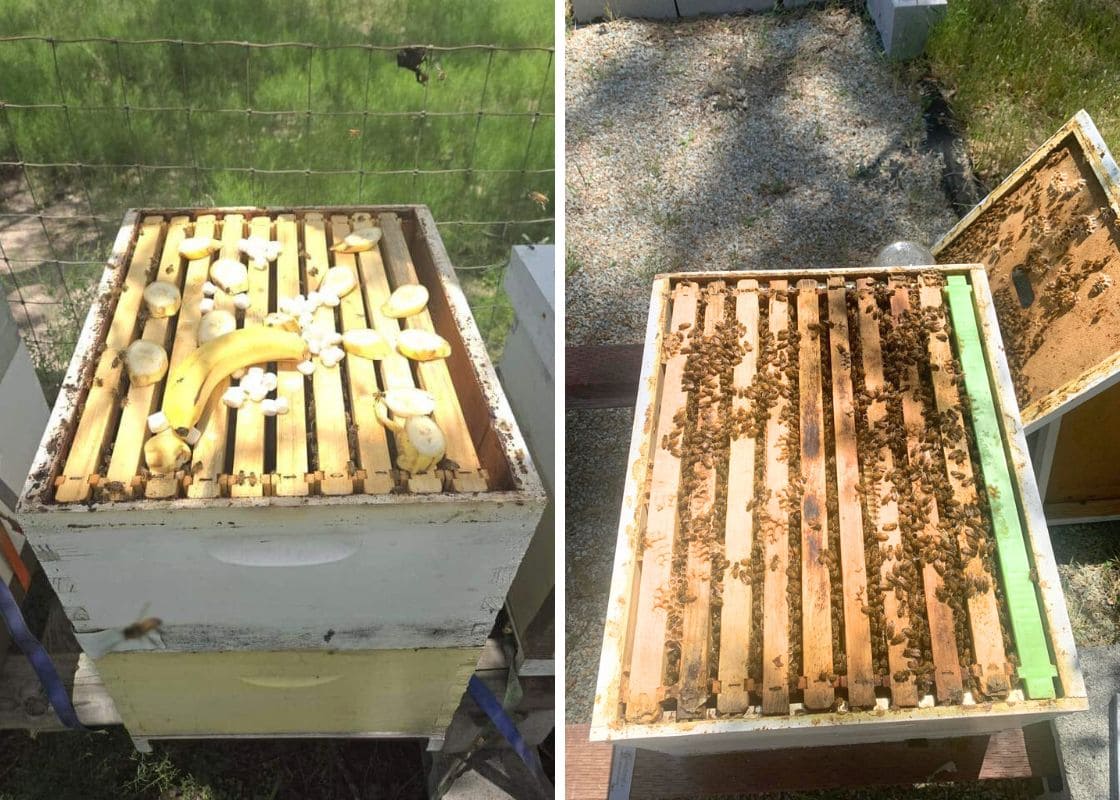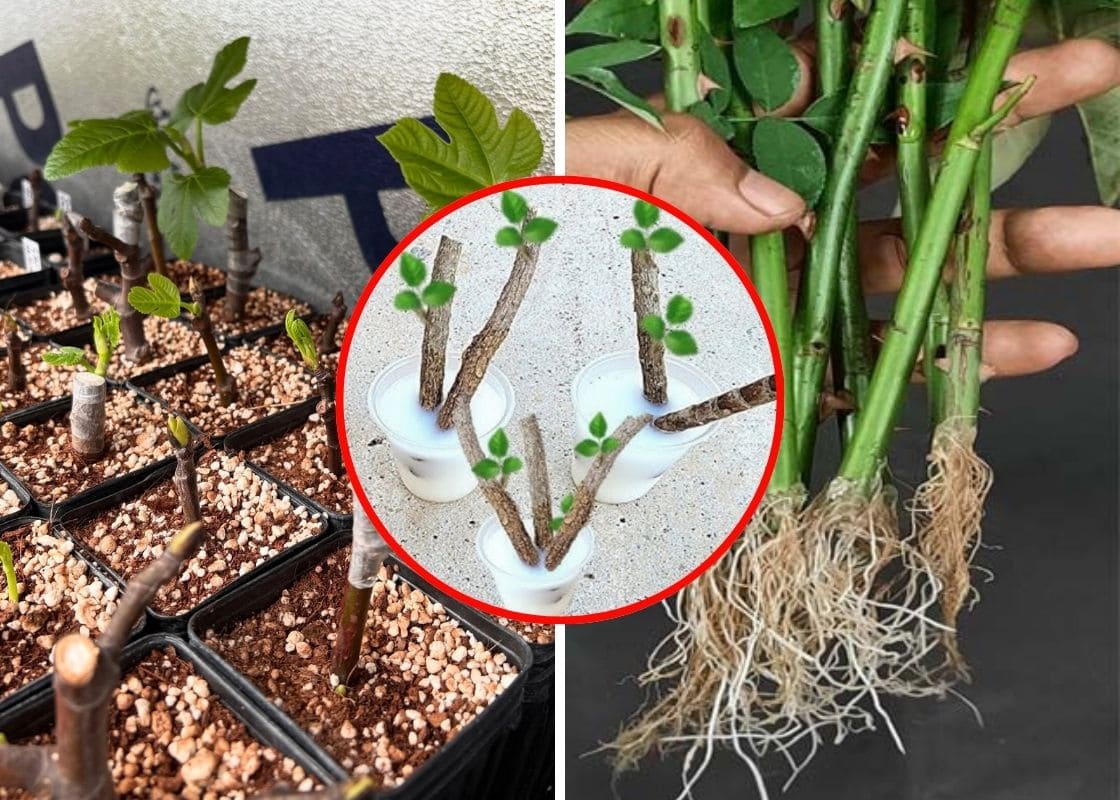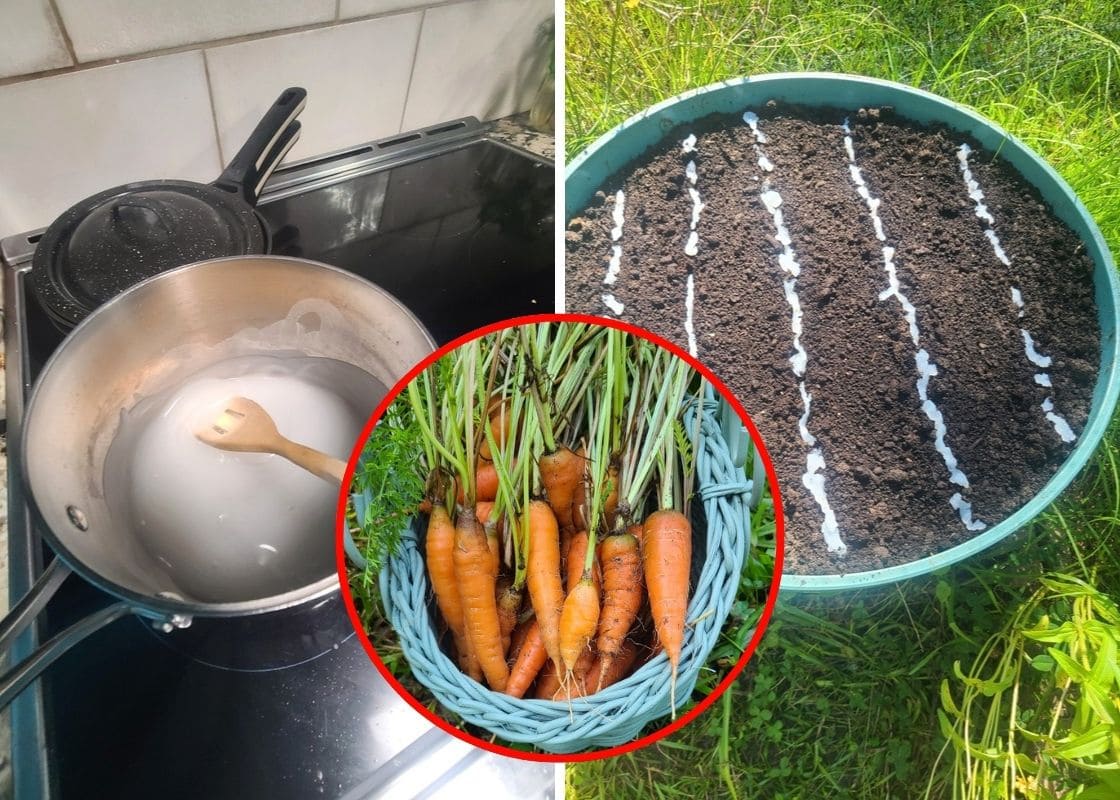Coleus has a way of stealing the spotlight in any garden or indoor corner.
With leaves painted in electric shades of purple, pink, lime, and burgundy, this plant is grown not for blooms but for its stunning foliage.
Still, coleus can sometimes lose its sparkle. Pale leaves, slower growth, or tired-looking stems often leave gardeners wondering how to revive it.
The answer might already be in your kitchen: coffee.
Used the right way, both brewed coffee and coffee grounds can act like a rescuer for coleus, giving it the nutrition it needs to regain vigor.
Let’s dig into why coffee works, how to use it, and the signs your coleus is ready to thank you with a burst of new growth.
Why Coffee Helps Coleus Thrive
Nitrogen for Lush Foliage
Coleus thrives on nitrogen, the nutrient that fuels leafy growth.
Since its beauty lies in its colorful leaves, nitrogen is more important here than in many other plants.
Coffee grounds are naturally high in nitrogen, which is why they’re often compared to a gentle slow-release fertilizer.
Improved Soil Health
When added to the soil, coffee grounds break down as organic matter.
This improves structure, making soil less compact, more airy, and better at retaining moisture without becoming soggy.
For coleus roots, that means easier access to both water and oxygen.
Adjusting Soil Acidity
Coleus prefers a slightly acidic to neutral pH, around 6-7.
If your soil is too alkaline, nutrients like iron and magnesium don’t get absorbed properly, leading to dull leaves.
Coffee can help tip the balance gently toward acidity, creating the right conditions for nutrient uptake.
Steady Feeding Over Time
Unlike synthetic fertilizers, which deliver an instant jolt of nutrients, coffee grounds release their goodness slowly as they decompose.
This steady trickle of nitrogen helps coleus stay strong and colorful over the long term.
How to Use Coffee for Your Coleus
1. Diluted Brewed Coffee
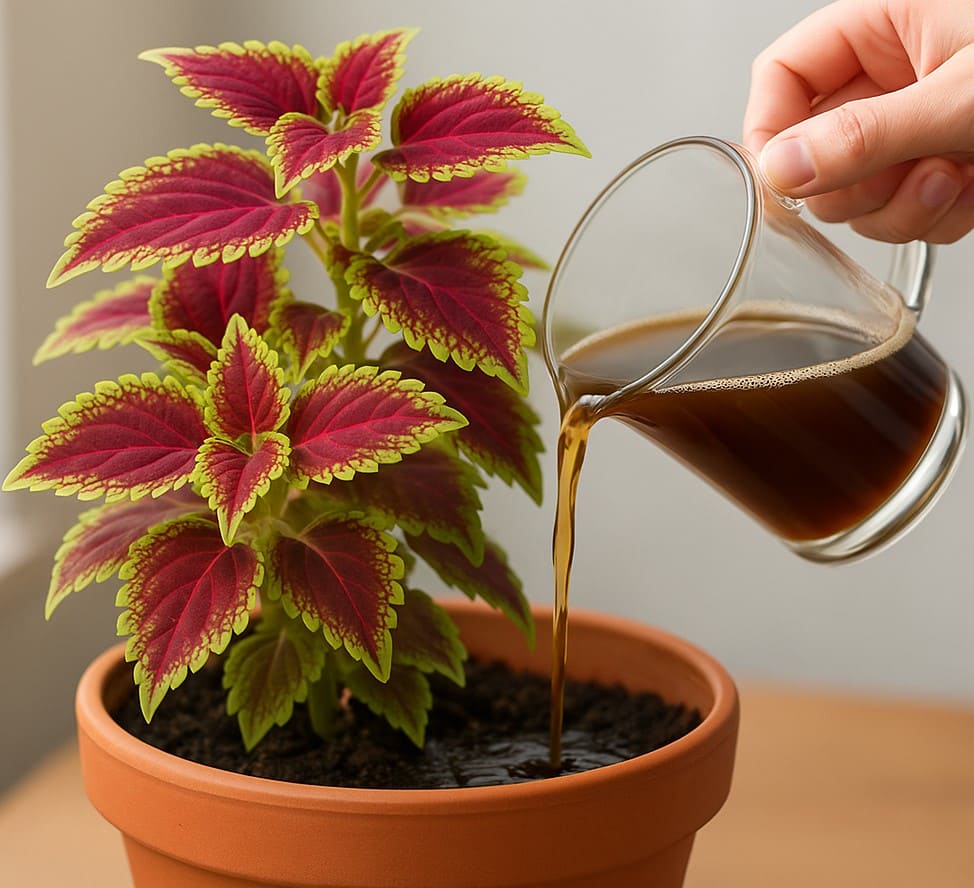
If you have leftover black coffee, don’t toss it. Dilute it with water at a ratio of 1 part coffee to 3 parts water.
Then use this mixture every 2-3 weeks as a liquid feed for your coleus.
You need to pour it at the base, soaking into the soil. This acts as a gentle fertilizer that perks up pale or sluggish plants.
2. Coffee Grounds in Soil
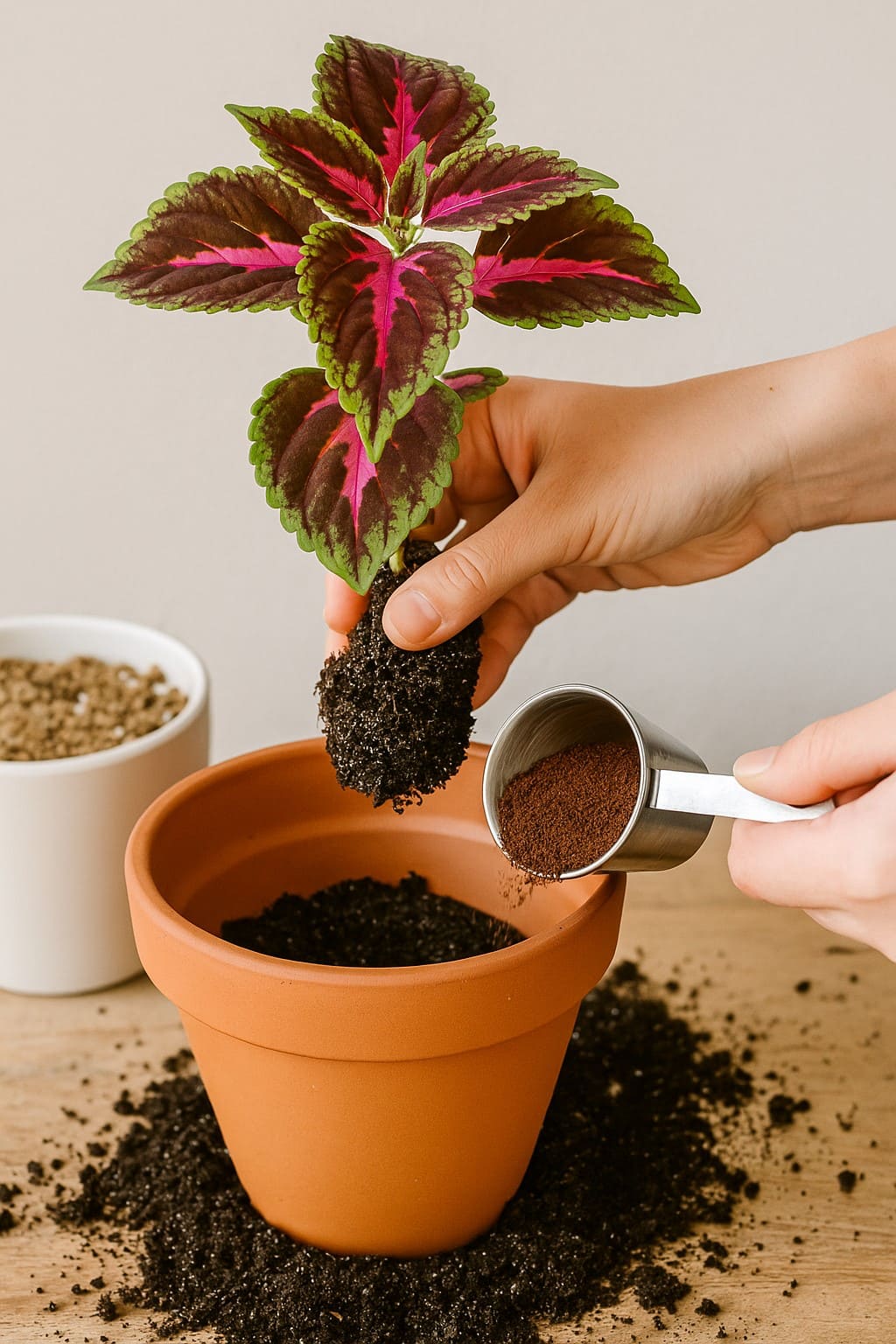
Used coffee grounds can be sprinkled lightly across the top of the soil. Water afterward to help them settle, or work them gently into the top inch of soil.
You can also mix them into potting mix when repotting coleus. This improves soil texture while slowly releasing nutrients.
3. Adding to Compost
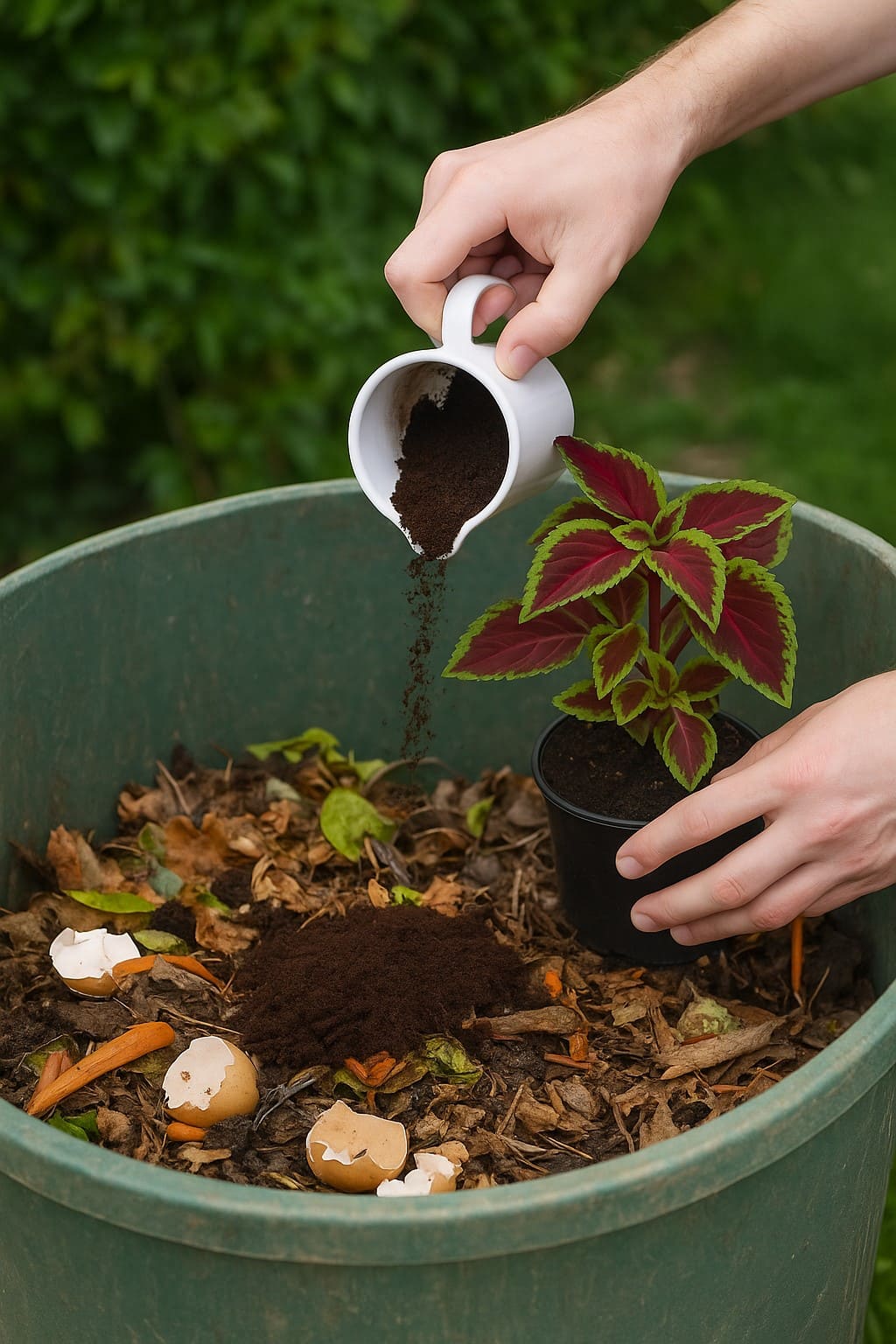
If you prefer to play it safe, coffee grounds work wonderfully in compost.
When blended with other kitchen and garden scraps, they break down into nutrient-rich humus.
Applying compost to coleus ensures balanced nutrition without the risk of making the soil too acidic.
Things to Keep in Mind
It’s easy to get carried away with coffee, but moderation is key. Too much can harm your coleus instead of helping it.
One common mistake is piling grounds too thickly on the soil surface.
This can compact into a crust, blocking air and water from reaching the roots. Always use a light sprinkle, not a heavy layer.

Another tip is to stick to plain black coffee and used grounds.
Never pour sweetened, flavored, or creamy coffee into your plants. The sugar and dairy can invite pests, encourage mold, and damage soil health.
Finally, remember that coffee is a supplement, not a replacement for balanced fertilizer.
Your coleus still benefits from an all-purpose liquid fertilizer during its peak growing season. Think of coffee as a little booster, not the whole meal.
Signs Coffee Is Working for Your Coleus
When your coleus responds well to coffee, you’ll notice the changes within a few weeks.
The leaves often deepen in color, showing richer tones of purple, red, or lime. If your plant was looking faded, this is one of the first signs the extra nitrogen is kicking in.
You may also see stronger new growth. Fresh leaves will appear larger and more vibrant than before, with a sturdier structure.
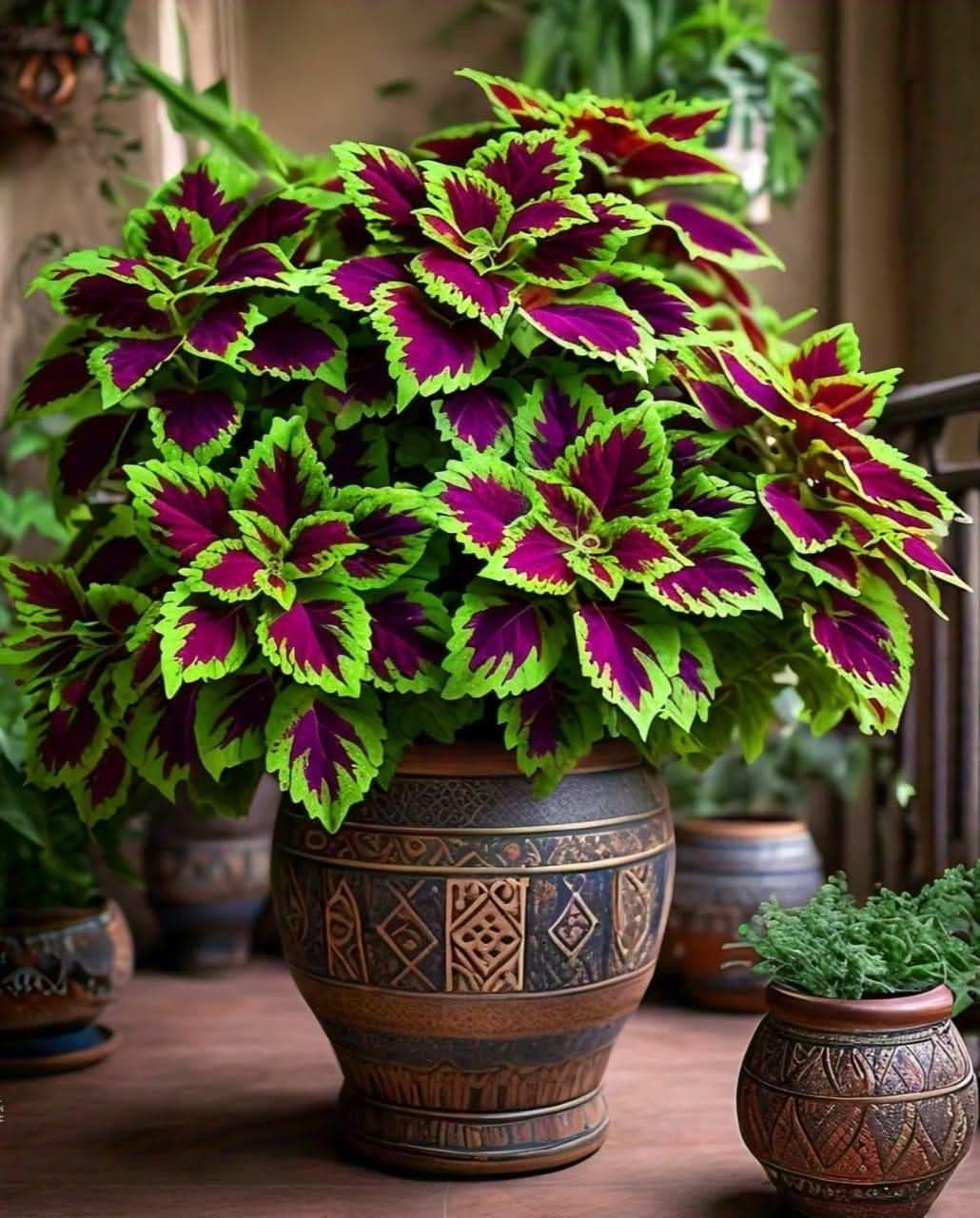
Another positive sign is the overall posture of the plant. Instead of looking limp or tired, the coleus will stand more upright and begin branching more, creating a fuller display.
Over time, you’ll notice denser foliage. Coffee doesn’t just keep your plant alive, it can transform it into a bushy, show-stopping feature in your garden or home.
